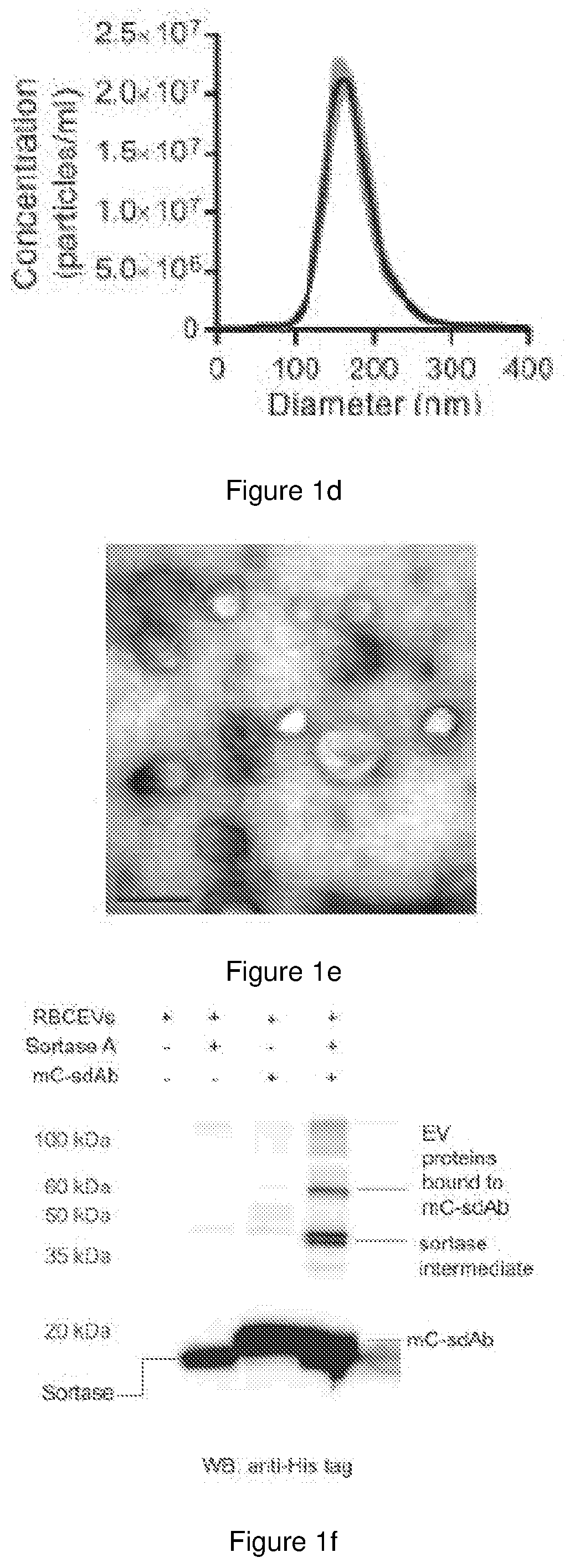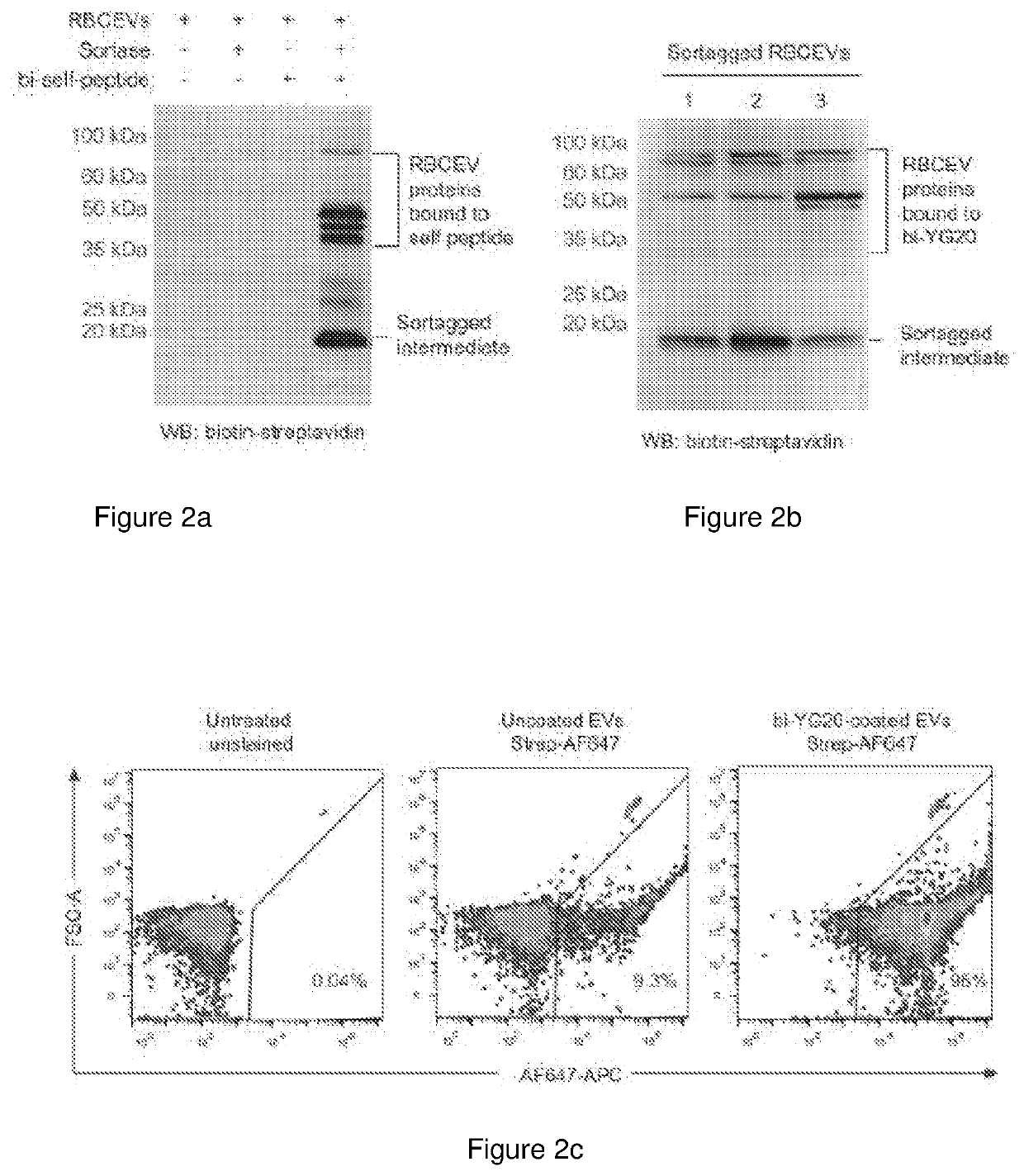Surface modified extracellular vesicles
a surface modified, extracellular vesicles technology, applied in the direction of epidermal growth factors, polypeptides with his-tags, peptides, etc., can solve the problems of limited ev production, low yield, time-consuming and inability to scale, etc., to achieve low toxicity, low immunogenic characteristics, and high delivery efficiency
- Summary
- Abstract
- Description
- Claims
- Application Information
AI Technical Summary
Benefits of technology
Problems solved by technology
Method used
Image
Examples
example 1
[0212]For therapeutic delivery, many research groups have attempted to produce EVs from cancer cell lines and stem cells which are very costly due to the large-scale cell culture. Moreover, EVs from cancer and stem cells may contain oncogenic proteins or growth factors that promote cancer growth. EVs from plasma and blood cells are safer for cancer therapies. We have recently developed a robust method for large scale purification of EVs from red blood cells (RBCs) and incorporation of RNAs in these EVs for gene therapies against cancer including acute myeloid leukemia (AML) and triple negative breast cancer (TNBC). We have shown that RBCEVs are taken up very well by both AML and TNBC cells and confer better transfection efficiency with lower toxicity than commercial transfection reagents. We also observed the uptake of RBCEVs in vivo where RBCEVs deliver antisense oligonucleotides (ASOs) that inhibits oncogenic miR-125b and suppressed the progression of AML and TNBCs. RBCEVs are als...
example 2
METHODS
Purification of EVs
[0255]Blood samples were obtained by Red Cross from healthy donors in Hong Kong with informed consents. All experiments with human blood samples were performed according to the guidelines and the approval of the City University of Hong Kong Human Subjects Ethics committee. RBCs were separated from plasma using centrifugation (1000×g for 8 min at 4° C.) and washed three time with PBS (1000×g for 8 min at 4° C.) and white blood cells were removed by using centrifugation and leukodepletion filters (Terumo Japan or Nigale, China). Isolated RBCs were collected in Nigale buffer (0.2 g / I citric acid, 1.5 g / I sodium citrate, 7.93 g / I glucose, 0.94 g / I sodium dihydrogen phosphate, 0.14 g / I adenine, 4.97 g / I sodium chloride, 14.57 g / I mannitol) and diluted 3 time in PBS containing 0.1 mg / ml Calcium Chloride and treated with 10 mM calcium ionophore (Sigma Aldrich) overnight (the final concentration of calcium ionophore was 10 μM). To purify EVs, RBCs and cell debris w...
PUM
| Property | Measurement | Unit |
|---|---|---|
| diameter | aaaaa | aaaaa |
| diameter | aaaaa | aaaaa |
| diameters | aaaaa | aaaaa |
Abstract
Description
Claims
Application Information
 Login to View More
Login to View More - R&D
- Intellectual Property
- Life Sciences
- Materials
- Tech Scout
- Unparalleled Data Quality
- Higher Quality Content
- 60% Fewer Hallucinations
Browse by: Latest US Patents, China's latest patents, Technical Efficacy Thesaurus, Application Domain, Technology Topic, Popular Technical Reports.
© 2025 PatSnap. All rights reserved.Legal|Privacy policy|Modern Slavery Act Transparency Statement|Sitemap|About US| Contact US: help@patsnap.com



